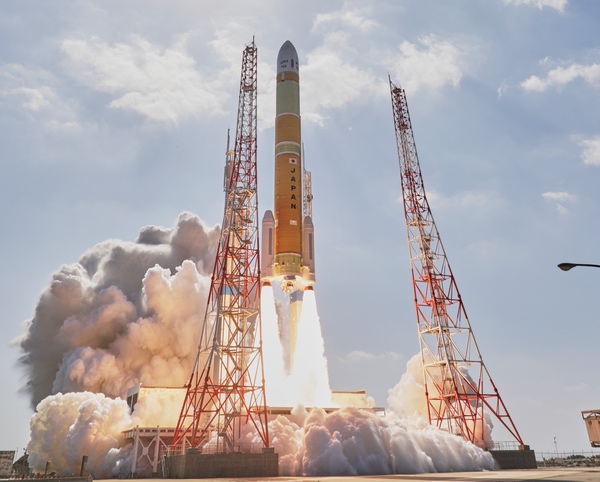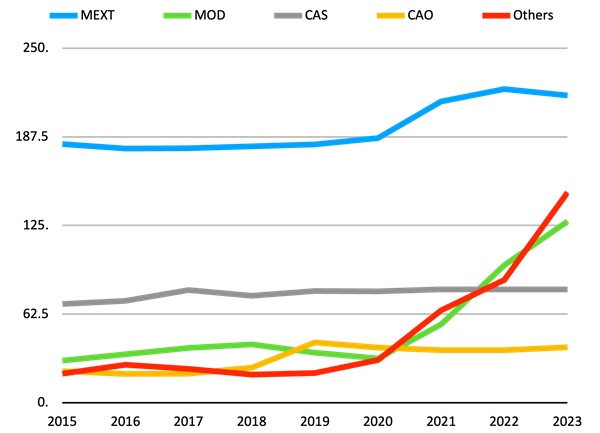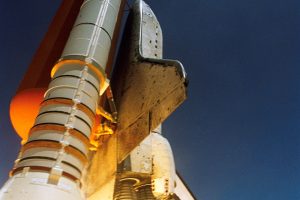On March 7, 2023, the Japan Aerospace Exploration Agency (JAXA) tried and failed to launch the first H3 launch vehicle. The H3 is Japan’s first new major rocket in 12 years and is expected to replace the current H-2A launch vehicle in terms of high-cost performance and flexibility. The main reason for its failure was that the second-stage engine did not ignite due to electrical problems. JAXA is working to determine the problem’s cause and resolve it immediately. However, the next launch date has yet to be set. This article discusses the losses suffered by Japan due to this failure and some of the contributing causes of these losses. Finally, a mechanism for ensuring a better balance of costs and risks for all Japanese space stakeholders is discussed for a positive way ahead. A review of Japan’s space policy after the H3 launch vehicle failure
Optical and Synthetic
The losses to Japan caused by this failure are immeasurable. The satellite on the H3 was JAXA’s Advanced Land Observing Satellite-3 (ALOS-3). The ALOS-3 satellite was developed and manufactured at a total cost of about 28 billion yen (about $208 million). JAXA’s ALOS series has alternated between optical and synthetic aperture radar imaging satellites. ALOS-3 was the first advanced optical satellite for land observation since 2011, when the ALOS-1 satellite mission was completed. The ALOS-4 satellite, currently in the manufacturing and testing phase, is a synthetic aperture radar satellite. Therefore, JAXA is not expected to have an optical satellite for land observations until 2028 or later.
 The first H3 lifts off March 7 on its ill-fated mission. (credit: JAXA) |
Operational Phase
In addition, the current ALOS-2 satellite is about to complete its mission and enter its late operational phase. Japan frequently experiences natural disasters such as earthquakes, heavy rains, and typhoons, and the loss of domestic remote sensing capability will be severe. For example, in the aftermath of the Great East Japan Earthquake in March 2011, the ALOS-1 satellite was used for emergency observations to assess the extent of the damage. In addition, JAXA is leading Sentinel Asia, an international cooperative project that aims to contribute to disaster management in the Asia-Pacific region by utilizing space technology. ALOS-3 was expected to contribute to Sentinel Asia and other international cooperative efforts. Japan’s loss will affect disaster prevention, security, and space exploration in the Asia-Pacific region. A review of Japan’s space policy after the H3 launch vehicle failure
Communications Satellite
According to the latest Implementation Plan of the Space Basic Plan published by the Government of Japan (GoJ) in December 2022, the Ministry of Defense’s X-band communications satellite is scheduled to be launched by the H3 vehicle at the end of Japan’s Fiscal Year (JFY) 2023, which will be March 2024. The influence of the H3 failure on the implementation plan is being reviewed within the GoJ. However, the launch date of the next H3 launch vehicle will likely be delayed for an unknown amount of time. Some estimates suggest a delay of a year or more. This situation will hinder the Ministry of Defense’s ability to obtain a new communications satellite on-orbit.
Martian Moons Exploration
In addition, the launch of the Martian Moons exploration (MMX), which aims to be the first sample return from Martian orbit; the Lunar Polar Exploration Mission (LUPEX), which is a joint mission with India; and the HTV-X, which is the new space station cargo resupply vehicle, are all scheduled to use the H3 launch vehicle after the end of JFY 2023. The ALOS-4 satellite and the Quasi-Zenith Satellite System MICHIBIKI-5 are scheduled to be launched by the H3 launch vehicle after JFY 2023.A review of Japan’s space policy after the H3 launch vehicle failure
Dummy Payload
Previous first flights of NASA’s, ESA’s, and Japan’s launch vehicles proceeded in different ways. The first flight of NASA’s Space Launch System, Artemis 1, was done at the same time as the test of the Orion spacecraft. The first flight of Japan’s H-2B launch vehicle was also done with the H-2 Transfer Vehicle (HTV) testing. However, Delta 4 Heavy, Antares, Falcon Heavy, and ESA’s Ariane 6 each carried, or will carry, dummy payloads or sets of small satellite as payloads on their first flights. In addition, in the case of the H-2A launch vehicle, there was a history of launching a payload for performance verification, which was affected by launch vehicle development delays. Based on these circumstances, it is not unusual for a launch vehicle’s first flight to carry a dummy payload.
Launch Vehicle Carries
If the first flight launch vehicle carries a test satellite, the budget for that satellite can be reduced. On the other hand, if not, the budget will inevitably grow because of the separate cost of launching that satellite on another launch vehicle. The launch cost of the H-2A is about 10 billion yen (about $75 million), which is inexpensive compared to the development cost of the ALOS-3 satellite. Although cost reduction sounds good, Japan has suffered a more significant loss.
 The budgets for various Japanese agencies working on space programs, in billions of yen. |
Government’s Policy
Additionally, the total budget of other ministries has increased sevenfold between JFY 2019 and 2023. The overall budget increase from JFY 2020 onward can be attributed to the decision to participate in the Artemis program in October 2019 and the government’s policy of significant increases in other space-related budgets. This increase means that the GoJ is becoming more active in space utilization.
Gathering Satellites
Five launches of the H-IIA launch vehicles are scheduled in the future: three Information Gathering Satellites, the Global Observing SATellite for Greenhouse gases and Water cycle (GOSAT-GW), and the X-Ray Imaging and Spectroscopy Mission (XRISM) with the Smart Lander for Investigating Moon (SLIM). Given the reasons mentioned above for JAXA’s decision to launch the ALOS-3 satellite on the H3, it is clear that the more essential satellites were assigned to the H-2A; that is, the ALOS-3 satellite had less policy importance compared to intelligence gathering satellites, SLIM, and others. It is clear that security and international space exploration are a focus of the GoJ, even from a non-budgetary perspective.
Agricultural Fields and Forest Management
The reason why the H-2A was assigned to the GOSAT-GW satellite instead of the ALOS-3 satellite may be because the ALOS-3 satellite was developed solely by MEXT/JAXA. On the other hand, the GOSAT-GW satellite is being developed under shared responsibility with MOE. The GOSAT-GW satellite is also expected to contribute to the global stocktaking of the Paris Agreement. This means that, unlike the ALOS-3 satellite, it is difficult for the GOSAT-GW satellite to divert budgets or change transport vehicles at the sole discretion of MEXT/JAXA. JAXA’s activities are not necessarily funded only by the operating budget from MEXT but can also be financed by commissioned contracts and grants from other ministries. For example, in the case of the ALOS-3 satellite, these ministries include MLIT from the perspective of disaster risk reduction and national land management and MAFF from the perspective of agricultural fields and forest management. Both MLIT and MAFF are expected to use the satellite’s data. A review of Japan’s space policy after the H3 launch vehicle failure

Developing and Manufacturing
nation, it is crucial to develop cutting-edge space technology and make greater efforts to utilize space for practical applications. Earth observation satellites are in increasing demand for disaster risk reduction, security, and international cooperation and diplomacy. Therefore, the CONSEO seeks continuous acquisition of Earth observation data through the infrastructure of governmental satellites. However, with the failure of the H3 launch, the Japanese government faces a significant gap in optical land observation data. This review suggests two ways that the GoJ can avoid such a situation in the future, based on the above discussion of how current situation came about. The first is that a dummy payload should be used for the first flight test of a new launch vehicle. For this purpose, it is necessary to allocate a sufficient budget to put a dummy payload on board. The second is that not only MEXT/JAXA, but also the relevant ministries and agencies that will use satellite data and services, should actively participate in the development process and equitably bear the development costs and risks when developing and manufacturing new governmental satellites in the future.
